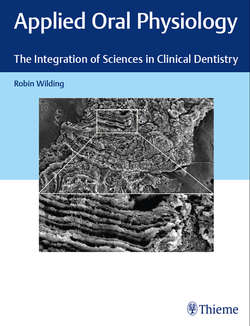Читать книгу Applied Oral Physiology - Robin Wilding - Страница 53
На сайте Литреса книга снята с продажи.
3.6.2 Origins of Cementum
ОглавлениеCementum is formed by cementoblasts which may be derived from the dental epithelium, but there is also a view that their origins are from the dental follicle. There is a close relationship between mature enamel and cementum. In the teeth of herbivores, such as elephants and cows, cementum is deposited against enamel between the cusps of the tooth and contributes to the composite surface of the tooth when wear has exposed dentin. This association of cementum may be found in its origins. There is evidence that cementoblasts are derived from remnants of the enamel epithelium under the inductive influence of cells from dental mesenchyme.3 On the cell membranes of cementoblasts and osteoblasts, there are specific receptors (integrins) for an adhesion molecule in the matrix of mineralizing tissue, called bone sialoprotein (BSP). Just before the first layer of cementum is formed on the developing root surface, the dental follicle cells produce BSP which is subsequently found in mineralizing cementum. This suggest an important role played by BSP in the differentiation of cementoblasts prior to mineralization. While the participation of dental follicle cells is necessary, the progenitor cell of the cementoblasts appears to be derived from the dental epithelium. The epithelial cell rests described by Malassez have, in tissue cultures, been found to be essential for cementum formation. They synthesize a protein, amylin, which is localized to the area of cementum formation. The epithelial cell rests also appear to induce the formation of the fibrous attachment between root surface and adjacent bone. Between the cementum and dentin there is an intermediate, highly calcified layer. It has been called intermediate cementum, but there is evidence that it is not produced by cementoblasts or odontoblasts. This layer contains enamel proteins and may be a very thin layer of enamel. The conclusions from many studies is that the epithelial cell rests retain their potential to differentiate into mesenchyme stem–like cells capable of secreting both bone, collagen, and cementum and thus may be the progenitor cells of cementoblasts.4 It has also been argued that cementoblasts are not derived from either Hertwig's root sheath or ECRs but from mesenchymal cells of the dental follicle under the influence of ECRs.5 The epithelial cell rests may play an important role in periodontal regeneration.
Fig. 3.11 A undecalcified section through the root of a molar tooth (magnification × 500). The image has been selected from an area halfway toward the root apex showing the transition between acellular (ac) and cellular (c) cementum. The periodontal ligament (pl) has been removed during processing D, dentin.
